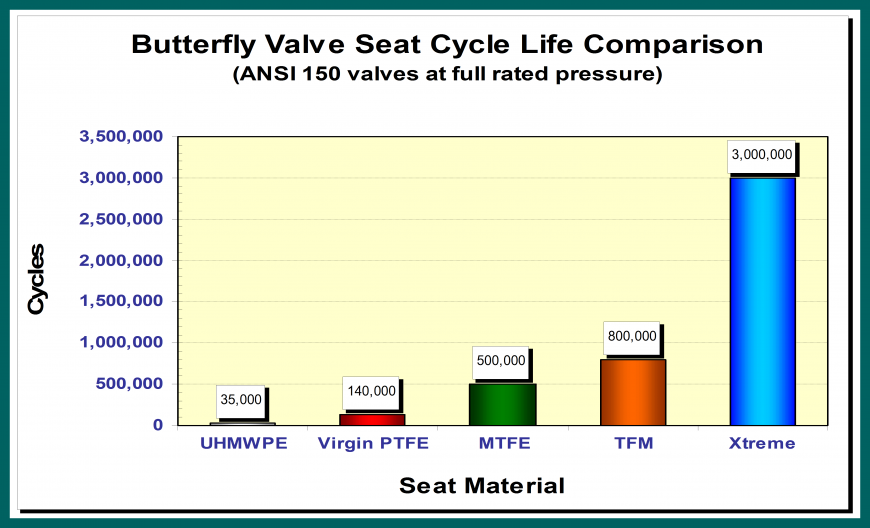
Design
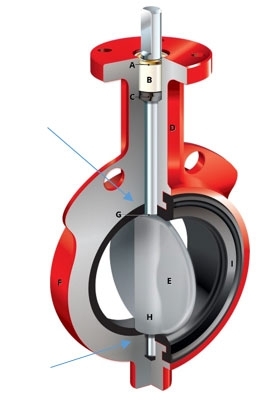
In contrast to this design, the Jamesbury Wafer-Sphere® stem is offset from center on two planes. The first offset is from the centerline of the valve and the second is from the centerline of the pipeline. This provides for the disc to cam completely away from the disc at a very few number of degrees of operation off the seat. See the following rendering:
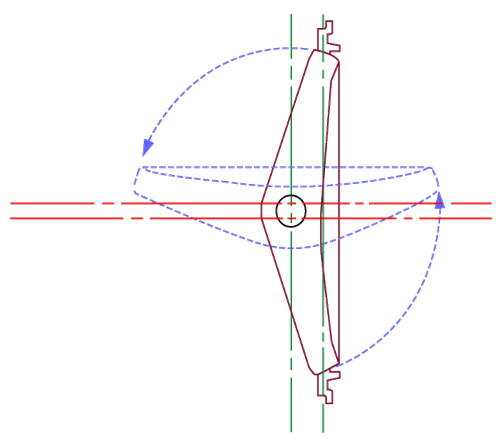
Seating Design and Material
With regard to seating, as mentioned before, the rubber lined valve effects its shutoff by squeezing its way into a rubber boot. The Jamesbury Wafer-Sphere® cams into a seat. The following diagrams depict how the seating is effected in 3 situations:
As Assembled:
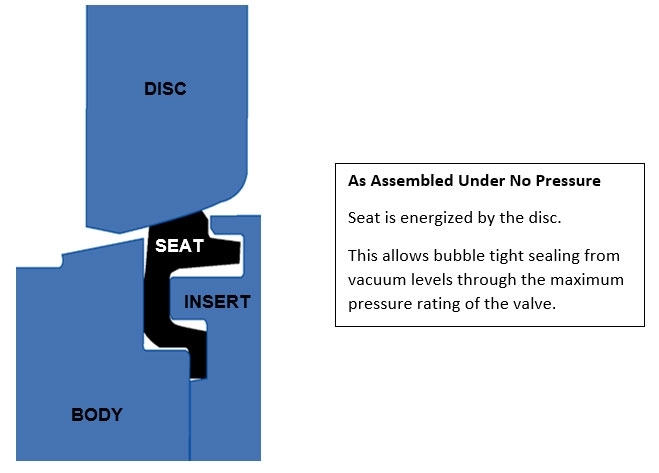
Pressure to the Shaft Side:
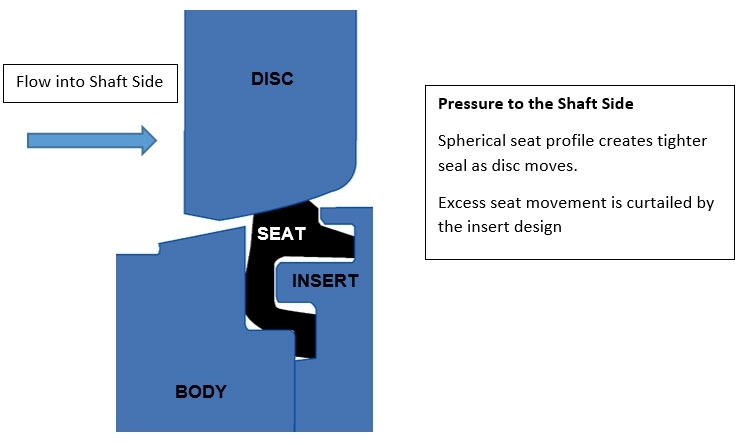
Pressure to the Insert Side:
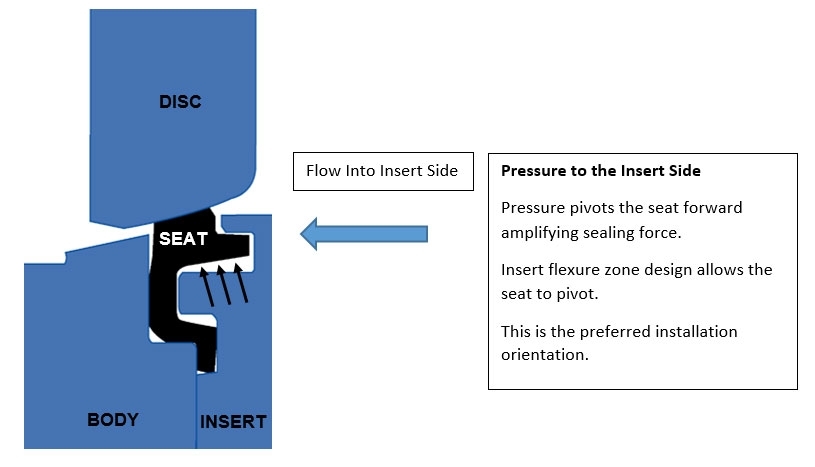
The advantage of the Xtreme seat and the Jamesbury design is that the Xtreme seat (and other polymeric seats) have a memory. The seat returns to its original shape after loading. The ability of the seat to recover is defined by the measurement of the seat’s permanent deflection. The lower the permanent deflection means the material has a better memory – it doesn’t easily permanently deflect after the load has been applied. So, a low permanent deflection measurement means an improved seat recovery and longer tight sealing life expectancy. It means improved tightness under pressure and thermal cycling. The deflection is affected by temperature. See a comparison of seat deflection below:
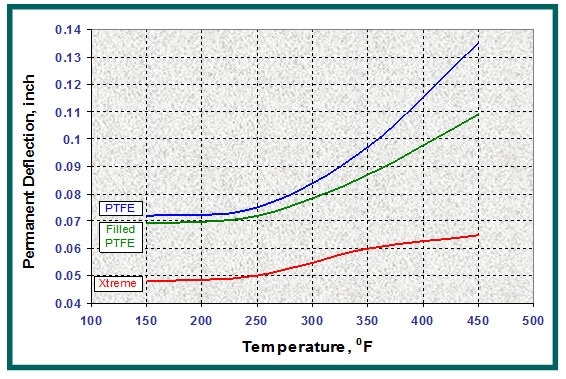
Stem Packing and Bearing Design
The final comparison point to make is that of the sealing from external leaks through the stem area.
As you can see below, the rubber lined valve has a very simple, non-adjustable stem sealing arrangement. The design utilizes a stem bushing to center the shaft (B) and 2 rubber U cups for sealing the media from escape (C). There is no adjustment to the sealing area meaning that if a leak occurs the valve has to be removed from line and repaired or replaced. There is no stem support in the lower shaft area so should particulate migrate into either the upper or lower shaft area, driving the torque up which causes difficulty in operation.
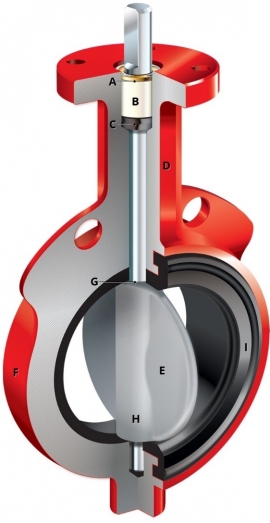
The Jamesbury Wafer-Sphere® design depicted below incorporates fully adjustable packing (Shaft Seal) to ensure a long life with no external leaks. Should a leak develop over time, the valve has a packing follower that is fully adjustable. Only turn the nuts ¼ turn each until the leak stops. The TFE Lined SS Bearings (Upper and Lower Shaft Bearing) ensure smooth, consistent torque through the life of the valve. The Thrust Bearings ensure no pressure from the process are exerting undue force on the packing or bearings. Legacy Jamesbury valves are still installed in many plants and in many applications with over 50 years of service in these cases.
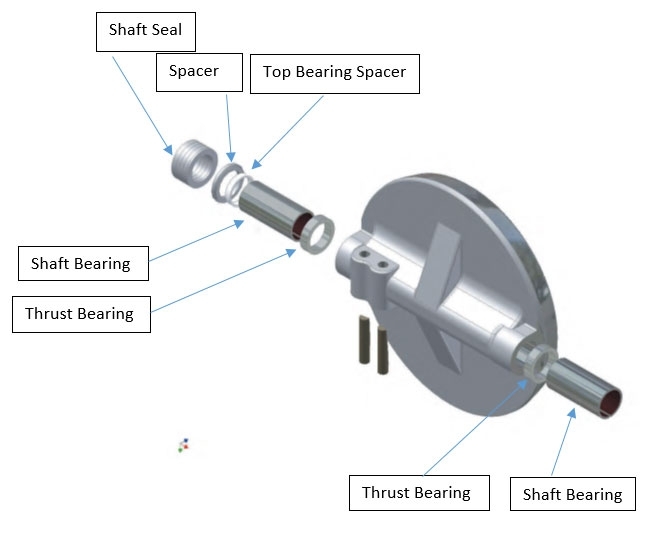
Although rubber lined butterfly valves are initially an economical solution, the materials of construction and construction design allow degradation over time. The rubber does not have a suitable memory and impressions are left in the rubber boot where the disc remains for extended periods of time. The packing and bearing arrangements are less than optimal for large diameter BFV’s when considering the cost to remove and repair.
The Jamesbury Wafer-Sphere® butterfly valve has a construction that is suited for long, problem free life. This valve has a superior body construction (double offset disc), has superior seating design (bi-directional seat that seals under any pressure situation), has superior seating materials (Xtreme polymeric seat with high life expectancy) and sealing capacity (adjustable packing, full length upper and lower bearings and thrust protection). The probability of a repair or replace situation with high performance butterfly valves is very unlikely and would occur only long after a rubber lined valve would experience.
Call us today at (855) 737-4714 to learn more, or fill out our online form and someone will get back to you.